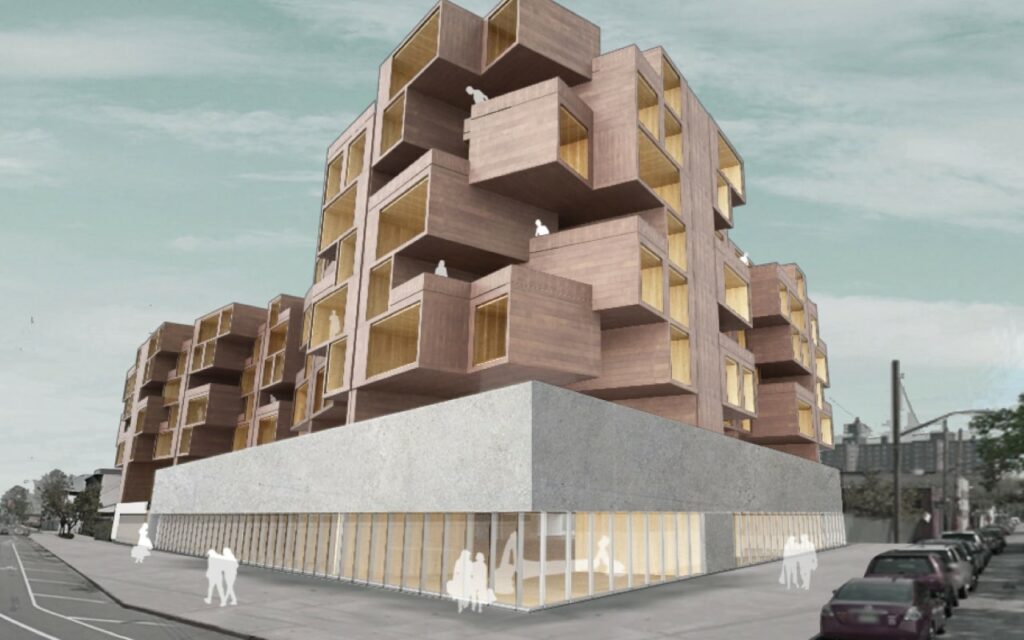Nowadays, time is probably one of the scarcest resources. Businesses are always in a hurry as demand keeps rising and expectations from clients are becoming harder and harder to meet. Every industry has had to deal with this and the construction industry is no exception.
In recent years, population growth has been rapid and by 2050, it is expected that 70% of the planet will be living in urban areas. However, this means that new housing options and other infrastructure solutions need to be built as well. Yet, we all know that constructions require important investments and take considerably long periods of time to see finished.
This is one of many reasons why modular construction has acquired great popularity in many different business segments such as hotels, schools, retail, etc. This clever option offers to cut construction time in more than a half, as well as reducing costs and adding an important versatility aspect to regular immovable buildings, achieving a much better return on investment for shareholders in the construction industry. In the next few lines, we’ll explain more about this great solution and why modular constructions are so revolutionary that now even Google has decided to expand its headquarters using modular construction.
Modular construction is a faster construction process where structures or modules are built offsite in a factory, to then be transported to the construction site to be installed. By doing this, construction companies can focus on preparing the building’s foundation while another business partner takes care of the modules at the same time, thus saving considerable amounts of time.
Another great feature of modular structures is its quality. As materials and building codes requirements do not change when it comes to modular, the industry’s standards stay the same. However, since they are not originally in-site, modules must be able to resist the transportation and therefore, built-quality must be a top priority for them.
Sustainability is also another great advantage of modular constructions. First of all, because construction time is much shorter, translating into fewer traffic problems as well as less pollution and disturbances than regular construction sites. Moreover, because huge quantities of materials are not required anymore as the construction of the modules is done offsite and most of the times outsourced, it is easier to focus only on the necessary and therefore, optimize materials by better controlling expenses and reducing waste on-site. Another additional feature of this process is the improvement of air quality inside of the construction, mainly because modules are made indoors and therefore, the inside of each module is much less exposed to humidity or other weather conditions that affect regular constructions. Finally, a very unique characteristic regarding sustainability from modular constructions is its flexibility. This means that modular construction can not only be disassembled and re-purposed but they can actually be relocated as well. For normal buildings, if no longer needed, demolition costs can rise up to exorbitant amounts and selling them might take months, unlike modular structures which only need be transported to a new location.
Flexibility is one key aspect that attracted Google to this construction trend. They want to offer the best environment possible, so workers can enjoy green spaces and technology at the same time. However, they understood that current needs might evolve and change in the future, therefore they opted for a modular design that will allow them to modify and keep improving their space constantly.
Sustainability from modular construction is also taken into account by the U.S. Green Building Council, where a modular construction can improve a grade in a LEED certification process, however, it is not the only factor considered for the certification. Other issues like energy efficiency, transportation, pollution, optimization of resources as well as health and well-being promotion are also considered.
Finally, we must mention that there are no particular design restrictions when it comes to modular constructions, as it refers to the process and not the aspect of the building, as many modular constructions look like regular constructions.
We can see that many organizations have put their bets into this form of construction, as well as governments, many who are promoting this new less polluting and faster construction process. Here there is a list of great modular constructions around the world.
Carmel Place – New York
Campus Uilenstede – Amstelveen
Housing Unit – London
Student Housing – Reims
FMO Finnforest Building – Helsinki
